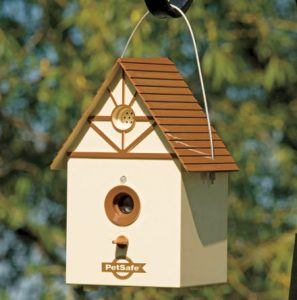
We’re all in agreement here – dogs are simply amazing. But, there are few things more annoying than a dog that barks nonstop, especially if it’s not your dog.

Perhaps you work a night shift and can’t sleep during the day because a neighbor’s dog is barking nonstop; or you have just put your baby down for a nap, only to have her sharply awakened thanks to the dog a couple doors down. It could be that you work from home and can’t jump on a call without everyone hearing your neighbor’s noisy pup.
Stopping a neighbor’s dog from barking can be frustrating and challenging. At least when it’s your dog, you can address the core problem, which is generally attributed to boredom, fear, or a lack of exercise. But when it’s your neighbor’s dog, the problem is not as easily addressed.
Fortunately, there are some things you can do to put an end to incessant barking.
1. Document the problem.
Documenting the barking is helpful not only to your neighbor, but to the authorities should you have to contact them. Keep an accurate record of the when the dog barks. A calendar is helpful and will give you room to document the times when barking occurs.
If you’re like most dog owners, you can distinguish between an “alarm” bark or a “boredom” bark. Make a note of the type of bark you feel it is. You may even begin to see the problem. For instance, if barking only occurs on specific days, it could be that a recurrent event is setting the dog off (maybe garbage trucks set him off on Tuesdays and gardeners on Fridays). The times of day that the dog barks may also be a good indicator of why he’s barking (perhaps kids getting out of school are annoying the dog). This not only gives you tools to work with, it can help the owner determine what’s happening if they aren’t home all the time.


2. Address the problem with your neighbor.
Most people dread confrontation, so it’s best if you approach your neighbor calmly and compassionately. In many cases, people are not even aware that their dog barks all day as they work away from home. Or, perhaps your neighbor knows their dog is barking, but isn’t sure how to solve the problem. Staying calm and factual will help you get further with the person – show them your notes and any let them listen to recordings you might have.
If a person chooses not to answer the door, or refuses to speak with you, leave a note. Make sure you record the date you left the note and whether or not you think they received it.


3. Give your neighbor some helpful suggestions.
If the neighbor is receptive to your help, suggest a few solutions to give them a hand. Even if you don’t know or understand dog behavior, consider the following suggestions:
If the dog is spending long hours alone in the back yard, there’s a good chance he’s barking to expend pent up energy. A doggy daycare or employing a dog walker might be all it takes to keep the peace. If your neighbor is unwilling or unable to provide additional exercise during the day, suggest they incorporate brain-games into their dog’s routine. Treat puzzles are an excellent way to exercise a dog’s brain. Mental exercise is as vital to a dog’s health and well-being as physical exercise.
If the dog is barking from inside your neighbor’s home or apartment, suggest they begin using a crate while away from home. Crate training is a simple, humane way to modify unwanted behavior in dogs. If you’re not sure how to crate train a dog the right way, check out this guide: Crate Training 101.
If the dog is “boredom barking”, suggest a Kong toy that has been filled with an edible stuffing and frozen. You may even offer to toss one over the wall in the afternoon if your neighbor provides it for you. These frozen toys are excellent ways to curb unwanted behavior due to boredom.
The Dogington Post is reader-supported. That means, if you make a purchase through links on our site, we may earn an affiliate commission.
4. Consider anti-bark solutions.
There are some alternative methods of stopping a dog from barking. These are tools your neighbor can use to stop this behavior.


Ultrasonic Dog Trainers: Ultrasonic dog trainers work by emitting specific frequencies that only a dog can hear. Available as collars or as freestanding devices, ultrasonic trainers are triggered by noise and vibration. Once activated, by a dog’s bark, for example, they emit a sound that distracts the dog, stopping him from barking.
A wonderful option for problem fur-neighbors is the Ultrasonic Birdhouse from PetSafe. This device can be used to stop your neighbor’s dog from barking without them knowing you’re doing it. This covert device can be helpful in keeping the peace when your neighbor isn’t addressing problem barking on his own.
Ultrasonic bark control devices need only be directed toward a dog who is barking (usually within 50 feet). When they detect noise, the devices give off a specific ultrasonic sound that stops dogs from barking by disrupting the behavior pattern. Unfortunately, they are not always effective for all dogs.
5. Contact the authorities.
If you’ve tried all of the suggestions above, and you have a solid record of the dates and times the dog barks, you may need to contact authorities for help. This generally means getting a homeowners’ association involved (if you have one), and contacting police or animal control. Authorities will most likely perform a wellness check on the dog and give your neighbor a warning that the problem must be resolved. If it is not resolved, your neighbor may face a hefty fine. If problem barking continues still, your neighbor may lose custody of their pet. Consider how involving authorities and law enforcement may impact the relationship with your neighbor before picking up the phone.
There are many ways to stop a dog from barking and you needn’t use severe, painful, or abusive controls. In most cases, a barking dog is simply bored or responding to a specific stimuli. Help your neighbor learn how to deal with the issue rather than respond angrily. Not only will approaching the problem calmly help you and your neighbor, it could help to make the entire neighborhood a bit more comfortable to live in.



